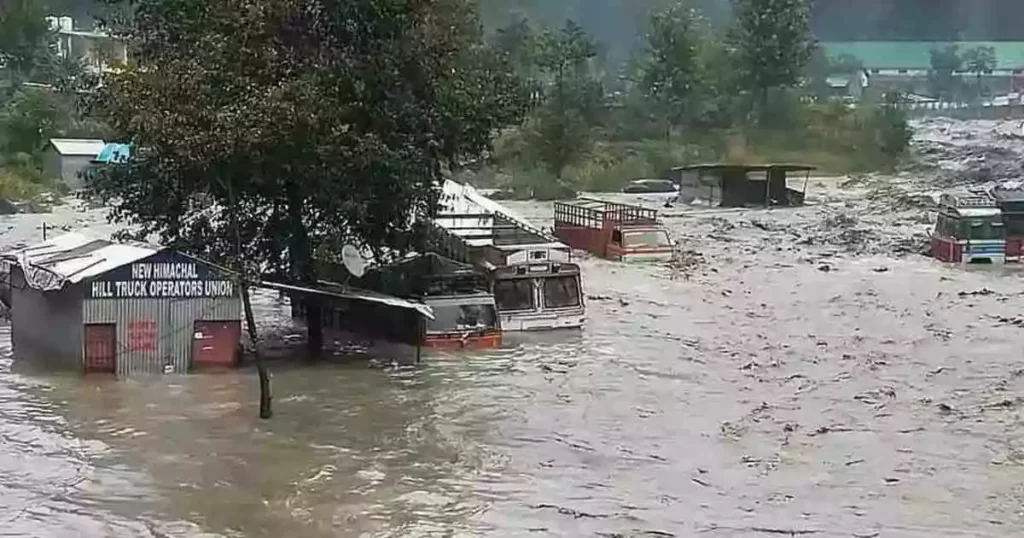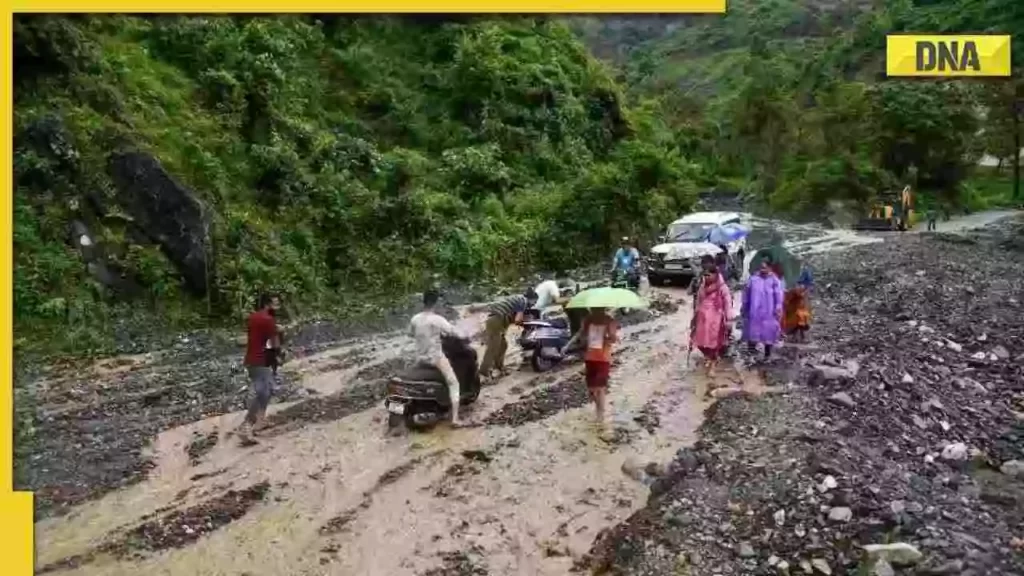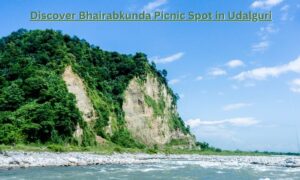The monsoon season in India brings with it a unique charm, transforming the landscape into lush greenery and filling the air with a refreshing scent. However, for travelers seeking to explore the country during this time, it is important to consider the challenges that come with the monsoon season. From heavy rainfall and waterlogged streets to potential disruptions in transportation and outdoor activities, the monsoon season can significantly impact travel plans. To help you make informed decisions, here is a list of the top 15 places to avoid during the monsoon season in India.
Contents
ToggleLadakh Places to Avoid Monsoon Season
Nestled in the northernmost region of India, Ladakh is known for its stunning landscapes and high-altitude mountain passes. However, during the monsoon season, the region experiences heavy rainfall, making it prone to landslides and road closures. It is advisable to avoid visiting Ladakh during this time to ensure a safe and hassle-free trip.

Uttarakhand Places to Avoid Monsoon Season
Home to picturesque hill stations like Nainital and Mussoorie, Uttarakhand attracts numerous tourists throughout the year. Nevertheless, during the monsoon season, the region receives copious amounts of rainfall, leading to landslides and flooding. It is best to plan your visit to Uttarakhand during the drier months to enjoy the beauty of the Himalayas without any weather-related hindrances.

Goa Places to Avoid Monsoon Season
Renowned for its stunning beaches and vibrant nightlife, Goa is a popular tourist destination in India. However, the monsoon season brings heavy rains and rough seas, making it less favorable for beach activities and water sports. Many beach shacks and establishments remain closed during this time as well. It is advisable to visit Goa during the winter months when the weather is pleasant and the sea is calm.

Read More: Discover the Most Romantic Places to Visit in Pune
Rajasthan Places to Avoid Monsoon Season
Known for its magnificent palaces, forts, and desert landscapes, Rajasthan experiences scorching heat during the summer months. While the monsoon season brings relief from the heat, it also brings unpredictable rainfall that can hinder outdoor sightseeing and exploration. To make the most of your visit to Rajasthan, it is recommended to plan your trip during the winter or spring season.

Andaman and Nicobar Islands Places to Avoid Monsoon Season
With its pristine beaches and diverse marine life, the Andaman and Nicobar Islands are a tropical paradise. However, the monsoon season brings heavy rain and strong winds, resulting in rough seas and limited visibility for water activities like snorkeling and diving. To enjoy the turquoise waters to their fullest, it is advisable to visit these islands during the dry season.

Kerala Places to Avoid Monsoon Season
Known as “God’s Own Country,” Kerala is blessed with serene backwaters, lush greenery, and abundant wildlife. However, during the monsoon season, the state experiences relentless rainfall, often leading to flooding and landslides. It is recommended to avoid visiting Kerala during the peak monsoon months to ensure a safe and enjoyable trip.

Meghalaya Places to Avoid Monsoon Season
Famous for its living root bridges and scenic landscapes, Meghalaya receives one of the highest rainfall amounts in the world. While the lush greenery and cascading waterfalls are mesmerizing during this time, the incessant rain can make it challenging to explore the region. It is advisable to visit Meghalaya during the drier months to fully appreciate its natural beauty.

Himachal Pradesh Places to Avoid Monsoon Season
Nestled in the lap of the Himalayas, Himachal Pradesh is a favorite among adventure enthusiasts and nature lovers. However, the monsoon season brings heavy rainfall, increasing the risk of landslides and road closures. To avoid any inconvenience, it is best to plan your trip to Himachal Pradesh during the summer or autumn months when the weather is more favorable.

Madhya Pradesh Places to Avoid Monsoon Season
Home to iconic landmarks such as the Khajuraho Temples and Bandhavgarh National Park, Madhya Pradesh offers a rich cultural and wildlife experience. Nevertheless, the state receives significant rainfall during the monsoon season, which can limit outdoor activities and wildlife sightings. Consider visiting Madhya Pradesh during the winter or spring season for a more comfortable and fulfilling trip.

Read More: Top 10 Tourist Places in India You Must Visit
Odisha Places to Avoid Monsoon Season
With its rich history and architectural wonders, Odisha attracts history buffs and art enthusiasts. However, the monsoon season brings heavy rainfall and cyclonic storms to the state, which can disrupt travel plans and cause inconvenience. It is advisable to visit Odisha during the drier months to explore its ancient temples and vibrant culture without weather-related disruptions.

Jammu and Kashmir Places to Avoid Monsoon Season
Known for its breathtaking landscapes and scenic beauty, Jammu and Kashmir is a popular destination among nature lovers and adventure seekers. However, during the monsoon season, the region experiences frequent rainfall, which can lead to landslides and roadblocks. To ensure a smooth and safe journey, plan your visit to Jammu and Kashmir during the summer or autumn months.

Karnataka Places to Avoid Monsoon Season
Boasting diverse landscapes, from lush forests to ancient ruins, Karnataka offers a range of attractions for travelers. However, the state receives heavy rainfall during the monsoon season, leading to waterlogging and transportation disruptions. It is advisable to visit Karnataka during the cooler and drier months to fully explore its historical and natural treasures.

Tamil Nadu Places to Avoid Monsoon Season
Known for its rich cultural heritage and magnificent temples, Tamil Nadu is a state that captivates visitors with its history and spirituality. However, the monsoon season brings heavy rainfall to the region, which can affect sightseeing plans and outdoor activities. It is best to plan your visit to Tamil Nadu during the winter or spring season for a more enjoyable experience.
Maharashtra Places to Avoid Monsoon Season
Home to bustling cities like Mumbai and Pune, as well as the iconic Western Ghats, Maharashtra offers a mix of urban and natural attractions. However, during the monsoon season, the state experiences heavy rainfall, leading to waterlogging and traffic congestion in cities. To explore the charms of Maharashtra without any weather-related disruptions, plan your trip during the drier months.
West Bengal Places to Avoid Monsoon Season
From the bustling streets of Kolkata to the serene beauty of Darjeeling and the Sundarbans, West Bengal offers a diverse range of experiences. However, the monsoon season brings torrential rainfall to the state, causing waterlogging and transportation issues. To make the most of your visit to West Bengal, it is recommended to plan your trip during the cooler and drier months.
Why Avoid Monsoon Seasons in India
Avoiding monsoon seasons in India is a wise decision for several reasons. The monsoon season, which typically lasts from June to September, brings heavy rainfall and creates various challenges for travelers. Here are a few reasons why it is advisable to avoid monsoon seasons in India:
- Weather Disruptions: The monsoon season in India is characterized by intense rainfall and unpredictable weather patterns. This can lead to frequent disruptions in transportation, including flight delays, cancellations, and road closures due to landslides and flooding. Navigating through waterlogged streets and dealing with limited mobility can be inconvenient and hinder your travel plans.
- Safety Concerns: The heavy rainfall during the monsoon season increases the risk of natural calamities such as landslides and flash floods. Many regions in India are prone to these hazards, and venturing into such areas during the monsoon season can put your safety at risk. It is advisable to prioritize your well-being and avoid areas with a high probability of such incidents.
- Limited Outdoor Activities: India offers a wide range of outdoor activities, such as trekking, wildlife safaris, and water sports. However, during the monsoon season, these activities may be limited or even suspended due to safety concerns. Beaches may have rough seas, national parks, and wildlife sanctuaries could be closed, and trekking trails may be inaccessible or dangerous. If you are keen on engaging in these activities, it is better to plan your visit during the drier months.
- Health and Hygiene: The monsoon season in India is also associated with an increase in waterborne diseases and mosquito-borne illnesses. Stagnant water and inadequate sanitation can lead to the breeding of mosquitoes and the spread of diseases like dengue, malaria, and waterborne infections like typhoid and cholera. Traveling during the monsoon season exposes you to a higher risk of contracting such illnesses, and it is advisable to prioritize your health and well-being.
- Limited Sightseeing Opportunities: The heavy rainfall and overcast skies during the monsoon season can limit visibility and hinder sightseeing experiences. This is especially true for hill stations and scenic landscapes that may be covered in mist or fog, making it difficult to enjoy the panoramic views and capture clear photographs. If you are keen on exploring the natural beauty of India, it is better to plan your visit during the months with more favorable weather conditions.
- Limited Availability of Services: During the monsoon season, many tourist establishments, such as beach shacks, resorts, and adventure activity centers, may remain closed or operate on a limited scale. This can impact the overall experience of your trip, as you may find fewer options for accommodation, dining, and entertainment. To ensure a more vibrant and lively atmosphere, it is advisable to visit India during the peak tourist season when these services are readily available.
Conclusion:
while India’s monsoon season adds a unique charm to the country, it is important to consider the challenges it presents for travelers. By avoiding the aforementioned places during the monsoon season, you can ensure a safer and more enjoyable trip to India. Plan your visit during the drier months to explore the country’s stunning landscapes, vibrant culture, and historical treasures without weather-related disruptions.
Places Avoid Monsoon Seasons in India FAQ
The monsoon season in India brings heavy rainfall, which can result in various challenges such as landslides, flooding, road closures, and transportation disruptions. These conditions can hinder outdoor activities, sightseeing, and exploration, making it less enjoyable and potentially unsafe to visit these places during the monsoon season.
Yes, some of the risks include landslides, which can pose a danger to travelers, especially in hilly areas. Flooding can lead to waterlogging and disrupt travel plans, while rough seas and strong winds can make beach activities unsafe. Additionally, heavy rainfall can affect visibility, hinder wildlife sightings, and cause transportation issues.
The monsoon season in India typically lasts from June to September, although the exact timing and intensity can vary across different regions of the country.
While it is possible to visit these places during the monsoon season if you are well-prepared and have contingency plans, it is generally advisable to avoid them during this time. The risks associated with heavy rainfall, landslides, and transportation disruptions can significantly impact your travel experience and may compromise your safety.
The best time to visit these places is generally during the drier months, which vary depending on the specific region. It is recommended to plan your visit during the winter or spring season when the weather is more favorable, and the risks associated with the monsoon season are minimized.
There are several destinations in India that are known for their beauty and charm during the monsoon season. Some popular options include the hill stations of Munnar and Kodaikanal in Kerala, the Western Ghats region of Maharashtra, and the northeastern states of India, such as Sikkim and Arunachal Pradesh. These regions often experience pleasant weather, lush greenery, and stunning waterfalls during the monsoon season, offering unique travel experiences.
Read More About: GNM Nursing In Siiguri




















